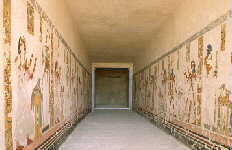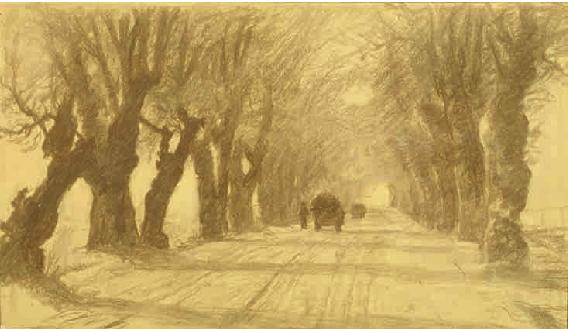






Suppose the viewer is 3 units from the picture plane. If P(2,4,5) is a point on an object we wish to paint, find the picture plane coordinates (x', y') of the perspective image of P.As a second example, we might want to make a perspective drawing of a real-life Christmas tree. We first put a dot at the image (x',y') of a point (x,y,z) where the coordinates of x' and y' are given by the perspective theorem as above. Then we continue to trace all possible such lines, accumulating all possible points P' associated with our original object. Once we have done this, we will end up with a perspective drawing of our Christmas tree.Solution
We have d=3, x=2, y=4, z=5. Thus
x'=(d x) / (z+d) = (3*2)/(5+3)=6/8=3/4 and
y'=(d y) / (z+d) =(3*4)/(5+3)=12/8=3/2.






